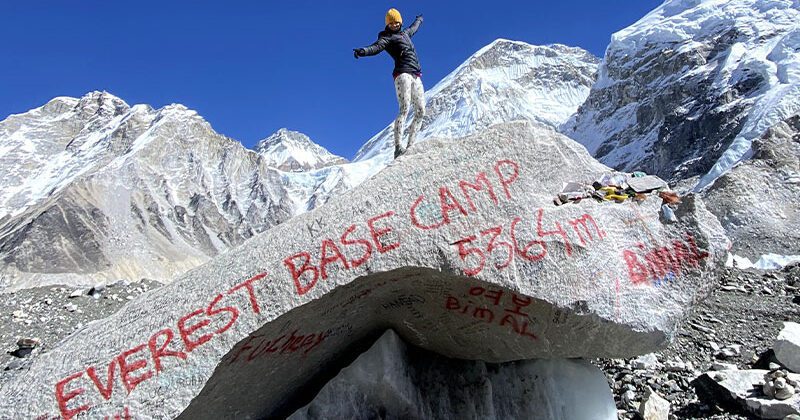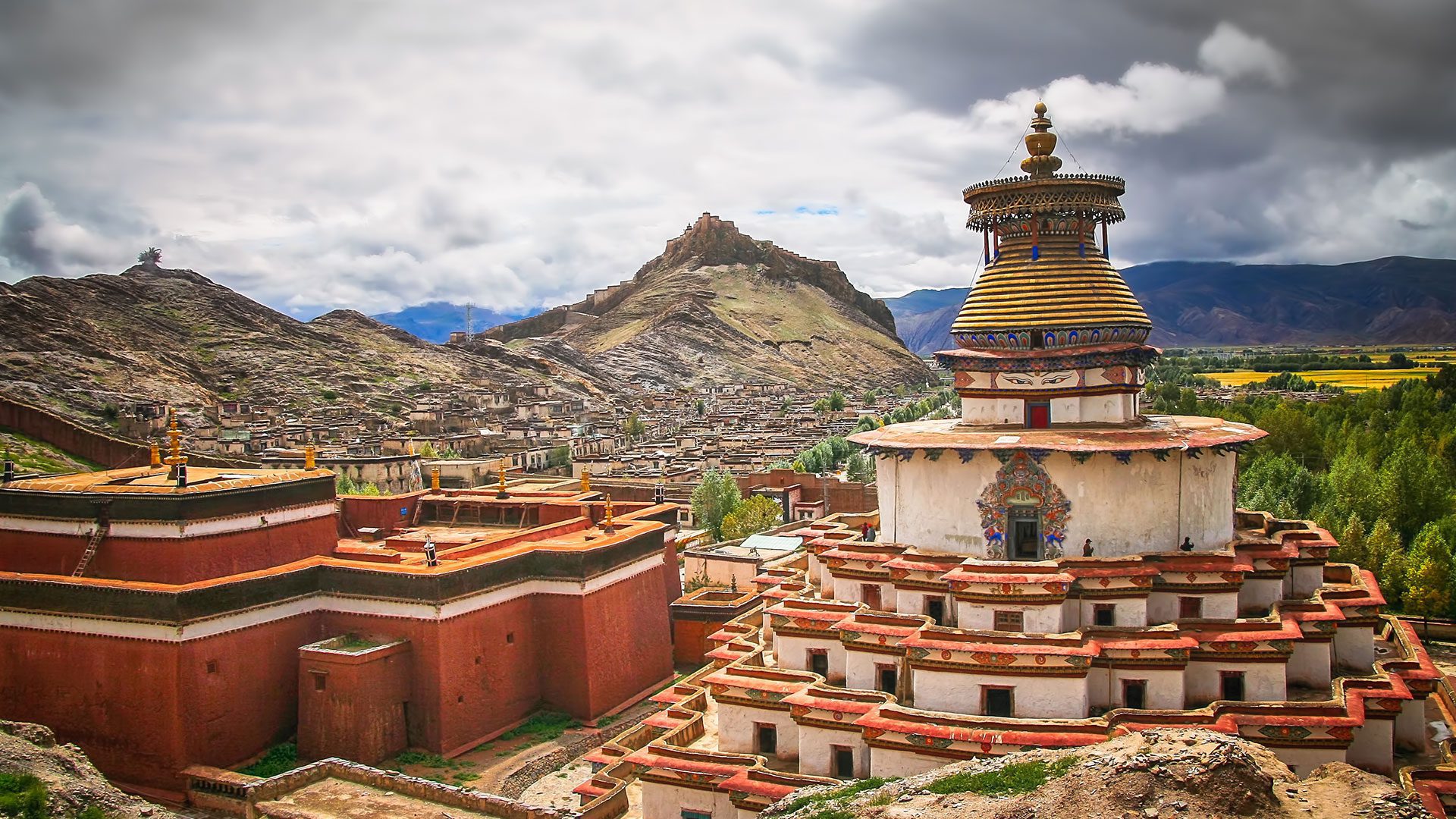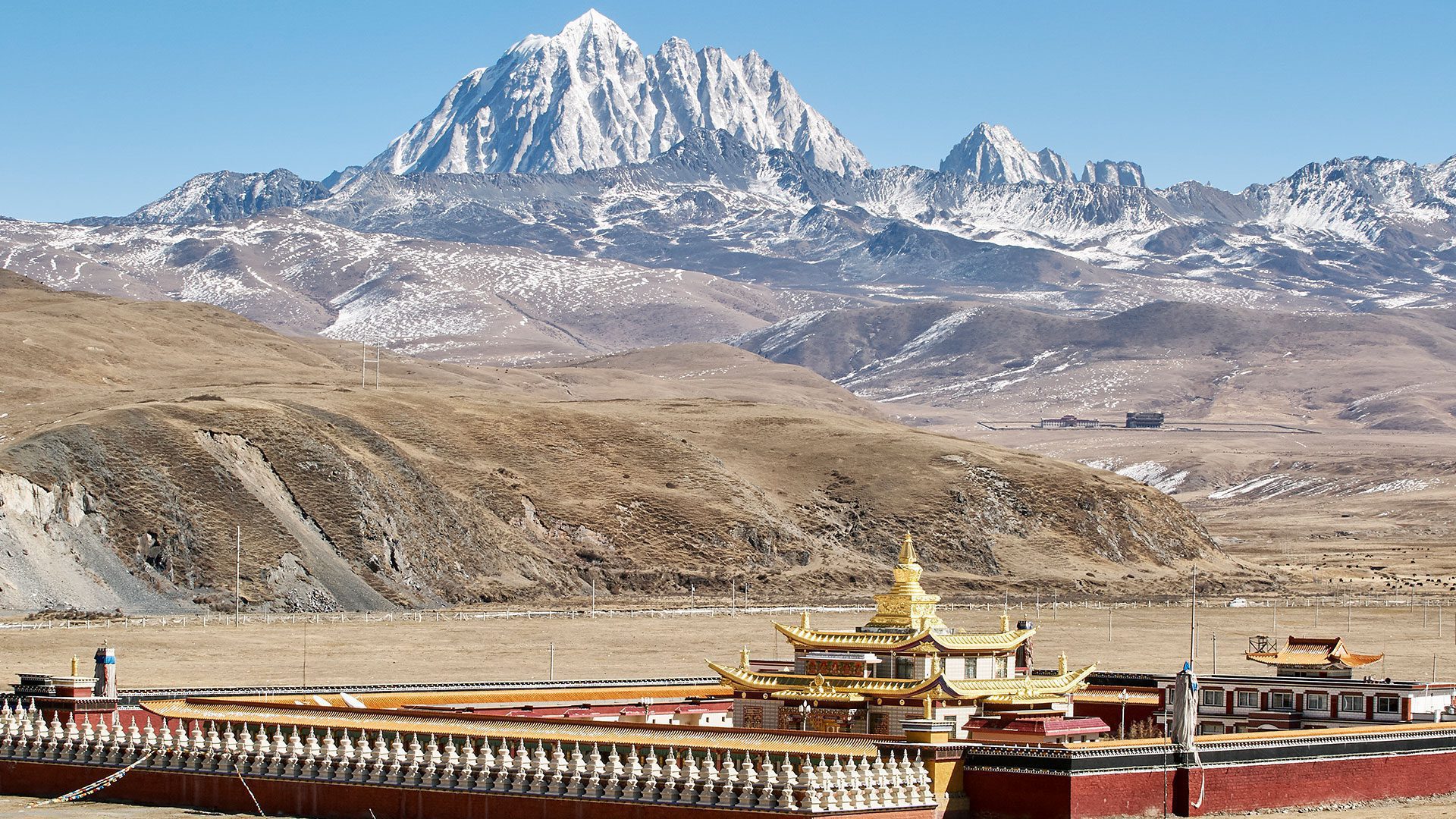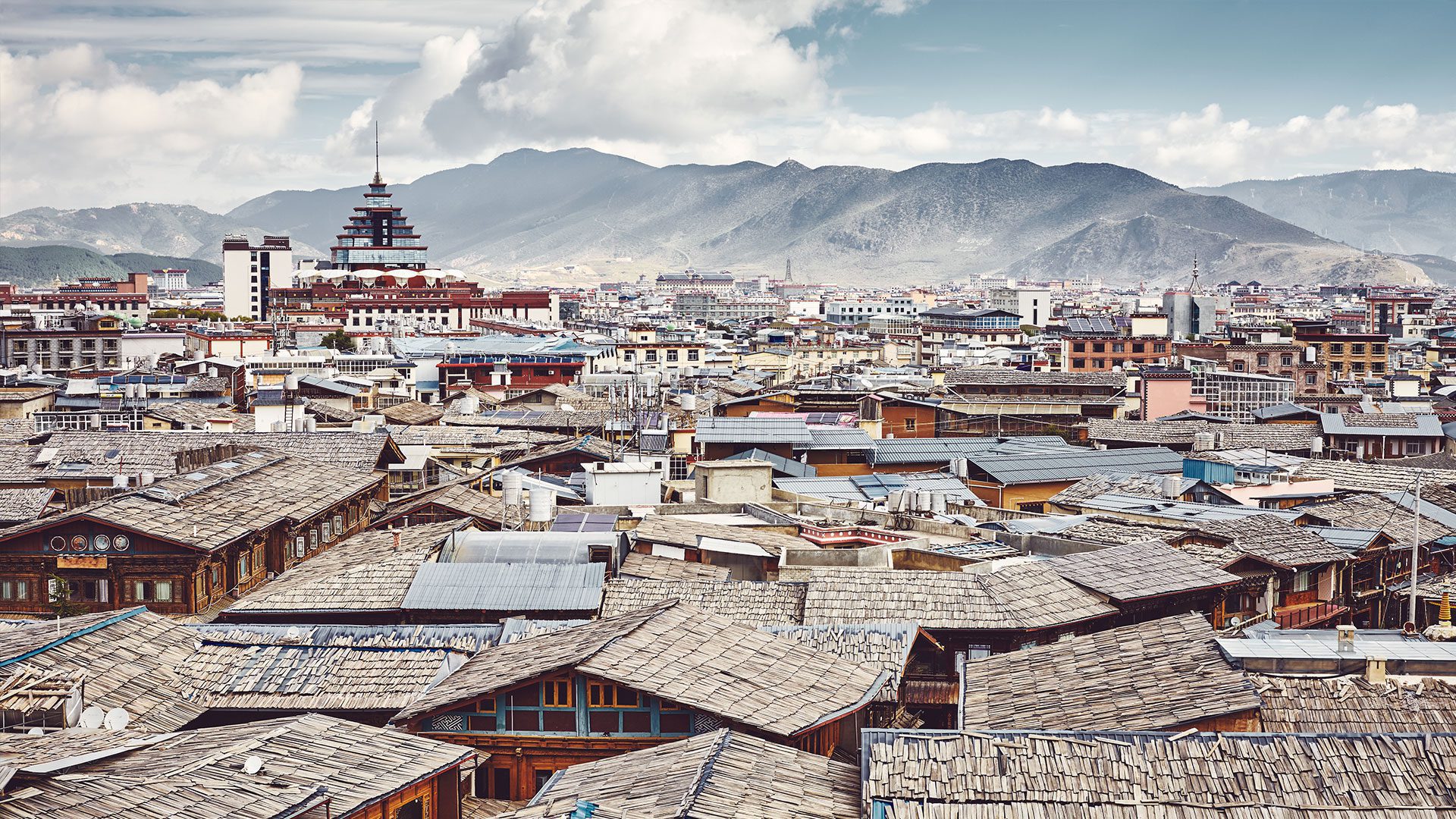Tibet Tour with Everest Base Camp 8 Days
5(23)
Trip Overview
One of the most well-liked and beautiful journeys in Tibet is the Tibet Tour with EBC (Everest Base Camp). You get an opportunity to take in the Himalayan beauty, the spiritual heart of Tibet, and the sense of adventure that comes with being at the foot of the highest peak in the world.
Your journey to Tibet tour officially starts from Kathmandu. The journey takes you into Tibet after a little planning and obtaining all the necessary permits. The scenic drive takes you into beautiful valleys, untamed terrain, and quaint Tibetan settlements. Although the travel is lengthy, the stunning sights make every second of it worthwhile. Along the drive, you will pass through various towns like Kyirung, Tingri, Gynatse, Ronbuk, Shigatse, and finally reach the destination place for sightseeing, Lhasa. By enjoying the view of the northern face of Mount Everest with stunning landscapes and magnificent views of peaks, the tour itself becomes joyful. After arriving in Lhasa, you can visit different monasteries, streets, and lakes such as Potala Palace, Jokhang Temple, Barkhor Street, Sera Monastery, Sacred Yamdrok, and Drepung Monastery. It is a two-day sightseeing, so enjoy the time in Lhasa. After all the sightseeing, you will return to Kathmandu.
There is more to a Tibet tour with Everest Base Camp than simply viewing the tallest mountain in the world. It’s about feeling the spirit of Tibet, getting in touch with its spiritual foundations and challenging yourself both mentally and physically while standing at the foot of Mount Everest. It’s an experience of a lifetime that combines the excitement of high-altitude travel with deep cultural exposure, providing a memorable trip through one of the most unique and remote regions on earth. So, what are you waiting for? Let’s start this amazing tour together!
Trip Highlights
- Explore Everest Base Camp (from the North Face) – 5,200 m (17,060 ft), where you get to see Incredible views of the world’s highest peak.
- Visit the highest monastery in the world, i.e., Rongbuk Monastery, which is peaceful, spiritual, and stunning.
- Explore the famous red-and-white structure on the hill is called Potala Palace, and visit Jokhang Temple, where locals go to pray.
- Explore Barkhor Street, which is lined with vibrant stores and rotating prayer wheels.
- See Sacred Yamdrok Lake, which is a great spot for peaceful reflection and photos.
- Visit Ancient Monasteries Like Tashilhunpo and see centuries-old artwork and statues.
- Meet Local Tibetan People and explore their culture and traditions.
- Cross high mountain passes like Gyatso La (5,220 m).
Itinerary
Your Journey, Step by Step
Kyirung (2,800m) to Tingri (4,300m) - 255km 5-6 hours
After having a delightful breakfast from Kyirung, you will now drive uphill to the height plateau in the world with the typical view of the Tibetan landscape. The drive offers a sheer feeling of standing on the roof of the world from where, weather permitting, a breathtaking panorama of beautiful Himalayan ranges, including Mt. Cho Oyu (8,201m) and Mt.Xishapangma (8,012m). The greenery of Kyirung gives way to wide-open spaces, snow-capped mountains, and the breathtaking Tibetan Plateau as you ascend higher in elevation. On the way to Pikucho Lake. After hours of riding, you will finally reach Tingri, which is a small town in southern Tibet.
Stay overnight in Tingri.
Tingri (4,300 m) to Ronbuk (5200 m) to Shigatse 335 Km -6-7 hour
You can take an early morning drive from Tingri to Rongbuk Monastery. On the way, you can enjoy breathtaking vistas of the Himalayas. After that, you can continue your hike or drive a short distance to Everest Base Camp (5,200m) after arriving at Rongbuk. You get to explore EBC for a while and have lunch while taking in the breathtaking views of the north face of Mount Everest. After enjoying such panoramic views, drive back to Shigatse in the afternoon, passing through small Tibetan settlements and rocky terrain. You can get to Shigatse in the evening to relax.
Stay overnight in Shigatse.
Shigatse (3,900m) – Gyantse (3,950m) 90 Km 3 Hours Drive
After having breakfast in Shigatse, enjoy a quick and enjoyable drive to Gyantse and travel through picturesque valleys and traditional Tibetan farming. You can see rural towns, terraced farms, and sheep and yak herds as you travel. Sightseeing is available at the Panchen Lama’s Tashilhumpo Monastery. Visit the well-known Palcho Monastery and its distinctive Kumbum Stupa, a multi-tiered building containing chapels and statues, as soon as you arrive in Gyantse. A delightful fusion of spirituality, history, and rural Tibetan life can be found in Gyantse. After that, you can call it a day.
Stay Overnight at the Hotel in Gyantse.
Gyantse (3,950 m) - Lhasa (3,650 m) 261 Km 05 - 06 Hours Drive
After a hearty breakfast in Gyantse, you will spend the full day on a picturesque drive crossing over Karola(5,010m), Kambala(4,749m), Colorful Yamdrok-Tso Lake, and the Tibetan lifeline river Brahma Putra (Yarlung Tsangpo). The path offers views of traditional Tibetan communities, high-altitude lakes, and breathtaking alpine landscapes. By late afternoon, you will reach Tibet’s cultural and spiritual center, Lhasa. After checking into your accommodation, relax.
Stay Overnight in Lhasa.
Sightseeing in Lhasa (3,600m)
Today is the sixth day of your tour. After having a delightful breakfast in Lhasa, you go sightseeing. Let’s start with the well-known Potala Palace, which represents Lhasa. Admire the breathtaking vistas of the city as you stroll through its magnificent halls and historic chapels. After that, proceed to Jokhang Temple, which is considered the holiest place in Tibetan Buddhism. You can see the tourists moving passionately around the temple. You can end the day with a walk down Barkhor Street, which is a bustling marketplace filled with prayer wheels, incense, and Tibetan handicrafts. Rest in the available hotel there.
Today is the seventh day of your sightseeing in Lhasa. You can start the day having a lovely breakfast. Today, you will visit Drepung Monastery, which is considered the home of Thousands of monks formerly. It is worth the climb for its peaceful atmosphere and stunning vistas. After that, go visit the renowned monk debate at Sera Monastery in the afternoon to see the spirited conversations among scholars. The evening will be yours to relax. You can go shopping for souvenirs or just take in the atmosphere of this historic city.
A two-day full sightseeing tour to Lhasa includes Jokhang Temple, Barkhor Bazar, Potala Palace, Drepung, and Sera Monasteries. You can conclude your sightseeing by resting and having a peaceful dinner in Lhasa’ s hotel.
Stay Overnight at the Hotel in Lhasa.
Lhasa to Kathmandu
You will travel to Lhasa Gonggar Airport for your return trip to Kathmandu after breakfast. This brief but breathtaking journey offers breathtaking aerial views of snow-capped peaks, including Mount Everest. It spans the Himalayan range. After completing the necessary immigration and customs processes in Kathmandu, you will be taken to your accommodation. You can spend the rest of the day relaxing, shopping, or touring the city.
Customize this trip with help from our local travel specialist that matches your Interests.
| Number of pax | Cost per person USD 3* |
| 02 pax (private tour ) | USD 1965 |
| 03 pax( Private tour ) | USD 1655 |
| 4-5 ( Private tour) | USD 1555 |
| 6-9 ( Private tour) | USD 1255 |
| 10-15( Private tour) | USD 1155 |
| 16-21( Private tour ) | USD 1055 |
| 22-30 ( Private tour) | USD 955 |
Inclusions
What’s Covered in Your Adventure
- Transportation by van/bus depends on number of Group Size and the Kathmandu to the Border Drop by Jeep.
- Tibet travel permit and EBC permit
- English-speaking Tibetan guide
- Accommodation on twin sharing room basis, 3* Hotel BB plan.
- Sightseeing and monastery entrance fees as per our itinerary.
- Daily breakfast.
- Hotel-airport in Lhasa
- Client and travel insurance.
- Lunch and dinner.
- Personal expenses such as a drink, tips& etc
- Unseen natural and political disturbances
Maps
Navigate Your Journey
Good to Know
Your Journey, Step by Step
Food and Drinking Water
The Tibet Everest Base Camp tour offers simple, filling, and comforting food that is ideal for traveling at high altitudes. Tibetan, Chinese, and some Western dishes can be found in places like Lhasa and Shigatse. The basic Tibetan food, like yak meat, fried rice, steamed momos (dumplings), warm noodle soups, and fresh veggies, is available. Vegetarians can order from most establishments, and your guide can assist you with placing your order. Food becomes simpler as you approach Everest Base Camp and further away from town. Meals could consist of rice with veggies, boiled eggs, quick noodles, and simple noodle soups. It’s a good idea to pack your favorite foods from home, such as tea bags, energy bars, or almonds.
Hydration is very crucial during tour. When it comes to water, never drink tap water. Use only bottled, boiled, or appropriately filtered water. Drink a lot of water, even if you don’t feel thirsty, because it is imporatant at high elevations like Everest Base Camp. It is advised to keep purification tablets or filters in your bad.
Accommodation for Tibet Tour with EBC
At each destination on your Tibet EBC adventure, you will find a unique experience thanks to accommodations that combine comfort and simplicity. Hotels in the cities (Lhasa, Shigatse) are comfortable and have every comfort you need, such as hot showers, comfy rooms, and possibly even Wi-Fi. The guesthouses at Everest Base Camp are more modest and have shared bathrooms. Although the rooms are basic, they provide warmth and security at high elevations. Along the route, you’ll come across modest but hospitable inns in tiny towns and villages, where you can experience traditional Tibetan hospitality. As you go higher in altitudes, Higher up, especially around EBC, be prepared for more basic amenities.
Electricity and Internet Service
Regular electricity and limited Wi-Fi are available at hotels in cities like Shigatse and Lhasa. It’s simple to use the internet and charge phones; just pack a universal adaptor. However, things become a bit difficult as you approach Everest Base Camp. Wi-Fi is frequently unavailable, and power is limited (sometimes only at night). Additionally, mobile signals can go out, which is the ideal reason to disconnect. Mobile signals are either absent or very weak, and power might only be available for a few hours. So, it is recommended to bring a power bank, before departing Lhasa, download maps and music, and install a VPN before using any apps, such as Google or WhatsApp.
Altitude sickness on the Tibet Tour with EBC
Tibet offers access to some of the world’s highest locations, such as Everest Base Camp, which is 5,200 meters (17,060 feet) above sea level. Despite the breathtaking vistas, sometimes there is a high chance of altitude sickness due to the thin air. You might feel a headache, dizziness, shortness of breath, fatigue, or trouble sleeping. If any symptoms occur, follow the safety precautions and acclimate quickly.
Safety and Security
In general, Tibet is an equally safe place to visit. Particularly for routes to Everest Base Camp, travel is well-organized and directed, and crime rates are low. Your guide is by your side the entire time, helping with emergencies, permits, and planning. The residents are kind, and even though the roads are far away, tour groups frequently travel them.
Permits required for Tibet Tour with EBC
Although it’s not hard to get to Tibet, you still need a few permits for a smooth tour. If you are travelling with a touring company, they will arrange all the permits required for the tour. Here are some of the important permits:
- Chinese Visa: Before traveling to China, get this from the Chinese Embassy in your area.
- Tibet Travel Permit: This is your official Tibet entry pass, which is issued by the Tibet Tourism Bureau and requires booking via a travel operator with a license.
- Aliens’ Travel Permit: It is necessary to enter off-limits places, such as Everest Base Camp.
- Border Pass: It is essential if you’re going near the Nepali border or entering Tibet from Nepal. Your travel agent also made the arrangements.
Note: If you are traveling from Nepal, do not apply for a standard Chinese visa in your home country. Your tour operator will arrange for you to obtain a special group Chinese visa in Kathmandu.
Required Documents for Tibet EBC tour
- Passport – Valid for at least 6 months
- Photocopy of Passport – Handy for permits and checkpoints
- Two to four passport-sized Photos – helpful for SIM cards, permits, and other purposes.
- Offline copies of every document
- Emergency Contact List: In case, both domestic and abroad
- A copy of your itinerary and booking confirmation: helpful for checking into hotels and crossing borders.
Travel Insurance for Tibet Tour with EBC
It’s an amazing adventure to travel to Tibet and Everest Base Camp, but because it involves long journeys, remote locations, and high altitude, having the proper travel insurance is crucial. Your insurance should cover:
- Emergency Health Care Costs: Treatment at high altitude (above 5,000 meters) must be covered. It should include hospital stays, accidents, and altitude sickness.
- Emergency Rescue & Evacuation: vital for isolated locations with few medical facilities, such as Everest Base Camp.Overland transport should be covered even though helicopter evacuation from Tibet would not always be possible.
- Cancellation or interruption of the trip: protects you if bad weather, illness, or political unrest causes your trip to be postponed, shortened, or cancelled.
- Baggage Loss or Delay: covers misplaced, stolen, or delayed luggage, which is helpful while traveling by air or crossing borders.
- High-Altitude Activity or Adventure Add-On: Travel at high altitudes is prohibited under certain policies. Ensure that it specifically addresses trips beyond 5,000 meters, since this applies to EBC in Tibet.
- Travel Delays: useful for lengthy trips where delays may occur due to bad weather or traffic.
Tibet Tour with EBC Cancellation Policy
Cancellation by the Guest
- 30 days before departure: Full reimbursement, excluding the cost of the bank transfer.
- Thirty percent of the total trip cost gets refunded ten days before departure.
- There will be a 50% refund if you cancel five days or fewer before your trip.
- If you need to postpone or cancel your trip at the last minute, there won’t be any extra charges.
There will be no refunds for any reason (such as personal illness, injury, or early return) after the trek has started.
Cancellation by the Company
In the event of unexpected events, natural disasters, or current events force the walk to be canceled, you have the following options:
- Receive an entire refund for the cost of the trip.
- Postpone your hike till a later time.
Cancellations Due to Weather or Flight Delays
We’ll make every effort to reschedule your vacation at no additional expense. Your trekking area will be adjusted if needed.
30% of the entire trip cost, less service fees for lodging, permits, and transportation, will be refunded to you in the event that you choose to cancel.
No-Show Policy
There won’t be compensation if the visitor unexpectedly doesn’t arrive on the scheduled departure date.
Travel Insurance Requirement
Having comprehensive travel insurance that covers medical emergencies, evacuation expenses, and trip cancellations is highly recommended.
Booking Policy of Tibet Tour with EBC
Our goal is to give our guests a seamless and adaptable booking experience.
The specifics of our Tibet Tour with EBC reservation policy are listed below:
1. Advance Payment & Booking Confirmation
To secure your place, a 30% deposit of the entire trip cost is needed.
When you arrive in Kathmandu, you can pay the remaining balance.
Paying the entire amount in advance is an additional choice.
To finalize the reservation, you need to send:
- The cost of the reservation, An electronic copy of your passport and
- Additional data is required, including travel insurance details or an emergency contact.
2. Payment Methods
For your convenience, we provide a variety of payment methods:
- Online Payment: Use our website’s payment gateway to make a secure online payment.
- Debit/Credit Cards: Visa, MasterCard, and other debit/credit cards are accepted, but there is a 4% bank service fee. Transfer money straight to our bank account by wire transfer or bank transfer (transaction fee).
- Cash or Check: You have the option of paying with cash or a check if you’re in Kathmandu.
3. Final Payment
The remaining 70% of the trip cost must be paid before departure. You can pay with cash, a card, or a bank transfer when you get there.
4. Booking Modifications & Rescheduling
Please give us at least 30 days’ notice if you must change the date of your trek.
Depending on the circumstances, date adjustments may be contingent upon availability and additional fees.
5. Travel Insurance Requirement
Every trekker has to have full-coverage travel insurance that covers evacuation, high-altitude medical emergencies, trip cancellations, and delays.
6. Last-Minute Booking
All trekkers must have full vacation coverage that covers medical situations at high altitudes, Evacuation, trip cancellations, and delays.
Group Size
The majority of Tibet EBC trips are conducted in small groups of four to twelve individuals, which makes the trip more enjoyable and personal. Better acclimation, simpler transportation, and increased engagement with your guide areall made possible by this size. If you want a more flexible and personalized experience, private trips are also offered.
FAQs
Your Questions, Answered
Can I travel to Tibet on my own?
No, solo travel isn’t allowed in Tibet. You have to take a guided tour, either private or group. You can directly contact us for your trek details.
Is the Everest Base Camp in Tibet different from Nepal?
Yes, the Everest Base Camp in Tibet is different from Nepal. The north side of Everest is in Tibet, and the south side is in Nepal. Both are beautiful, but you can drive to Tibet’s EBC.
How high is Everest Base Camp in Tibet?
Everest Base Camp in Tibet is about 5,200 meters (17,060 feet) above sea level.
Is altitude sickness a concern?
Yes, since the journey travels to high elevations, acclimatization is crucial. Most people can deal with moderate altitude, rest, and hydration.
What’s the best time to visit?
The best time to visit Tibet is April to June and mid-September to October , which offer clear skies and great views of Everest.
Do I need to be very fit?
No, this is mostly about a driving tour, not a trek. Basic walking ability is enough for you to complete the tour.
Can children or older adults join this tour?
Yes, but they should be in good health. You should always consult a doctor about altitude problems as you will be ascending the altitudes of 5000m.
What kind of accommodation can I expect?
You can expect decent hotels in cities like Lhasa and Shigatse, which offer basic guesthouses or tents near EBC.
Is there Wi-Fi or phone signal on the tour?
There is Wi-Fi and phone signals in most hotels in Lhasa and Shigatse, but it can be very limited or you cannot get signal near EBC.
Is Tibetan food spicy?
Not usually, Tibetan food is simple and hearty, like noodles, soups, and yak meat.
Can vegetarians find food easily?
Yes, you can find many restaurants in Tibet that can serve vegetarian dishes, especially in Lhasa.
Is it safe to drink the tap water?
No, it is generally not considered safe to directly drink the tap water. You should drink only bottled or boiled water.
What should I pack for the tour?
You should pack warm clothes (even in summer), good shoes, sunblock, sunglasses, a hat, and personal medications.
How long is the tour?
Most Tibet EBC tours are around 7 to 8 days.
What’s the Drive-in/Fly-out option?
You enter Tibet by road from Nepal and fly out from Lhasa or vice versa.
Is photography allowed everywhere?
Yes, photography is allowed. You can take pictures in most places, but not inside some temples and monasteries unless permitted.
Will I meet local Tibetan people?
Yes, you’ll see monks, travelers, and villagers on the way to Everest Base Camp. Some may even invite you to chat or take photos.
Is the road to EBC scary or dangerous?
Although the road to EBC is high and winding, it is well-traveled and secure when driven by a qualified professional.
Is Tibet expensive to visit?
It is reasonably priced. Private tours are more flexible but more expensive than group tours.
Do I need travel insurance?
Yes, you need travel insurance, especially one that covers altitude sickness and emergency evacuation.
Will I see Mount Everest?
Yes, you will see Mount Everest, especially in spring and autumn. But the weather can change, so there are no guarantees.
Do I need to carry cash?
Yes, you need to carry Chinese Yuan in cash. ATMs are available in Lhasa, but are very limited elsewhere.
Is Tibet worth visiting even if I’ve been to Nepal?
Tibet offers a completely different culture, view of Everest, and spiritual experience that makes it worth for a visit.
View Our Similar Packages
Discover our top tours, loved by thousands of travelers annually. Choose the adventure that inspires you and embark on a journey tailored to your desires.

Save 18%

Save 18%























